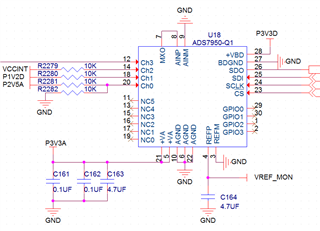Hi,
I use two pcs ADS7950 in my circuit. Under the condition that the power supply voltage of PCBA rises slowly, ADC sampling value cannot be read,nor when I rboot the FPGA on the PCBA . I guess that the ADC power-on abnormally , May I ask whether it is related to the power-on time sequence of +VA,+VB and CHx? Could you please give me some relevant guidance or suggestions?
Best wish
Qi Liu



